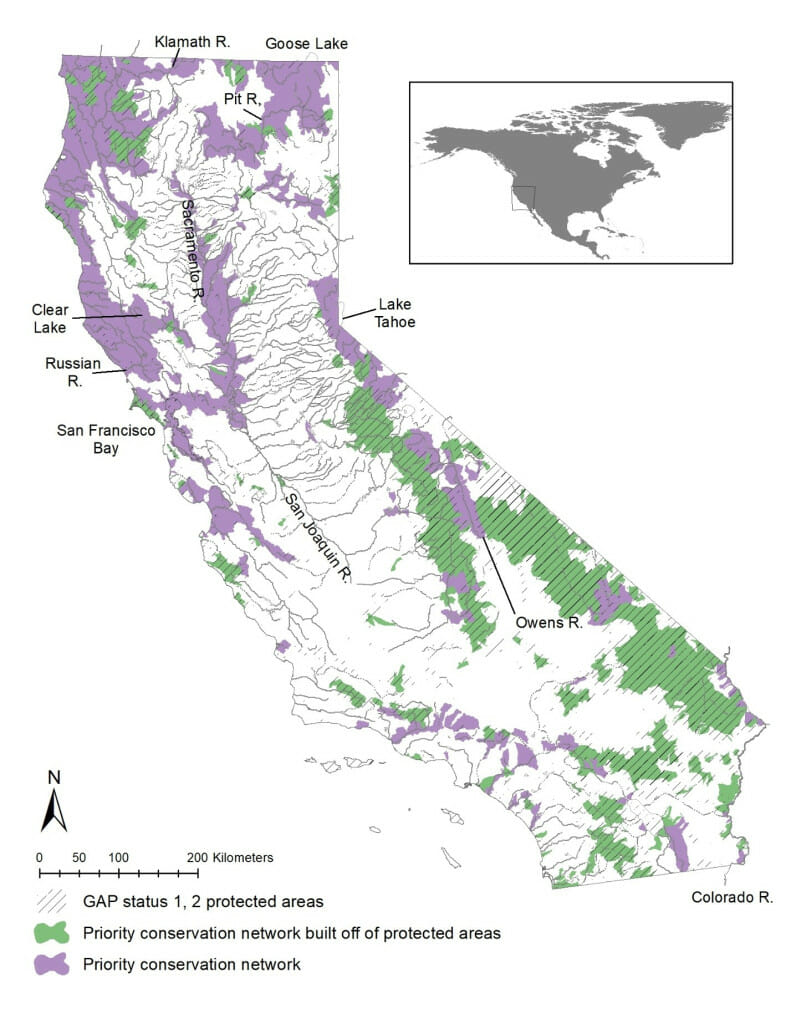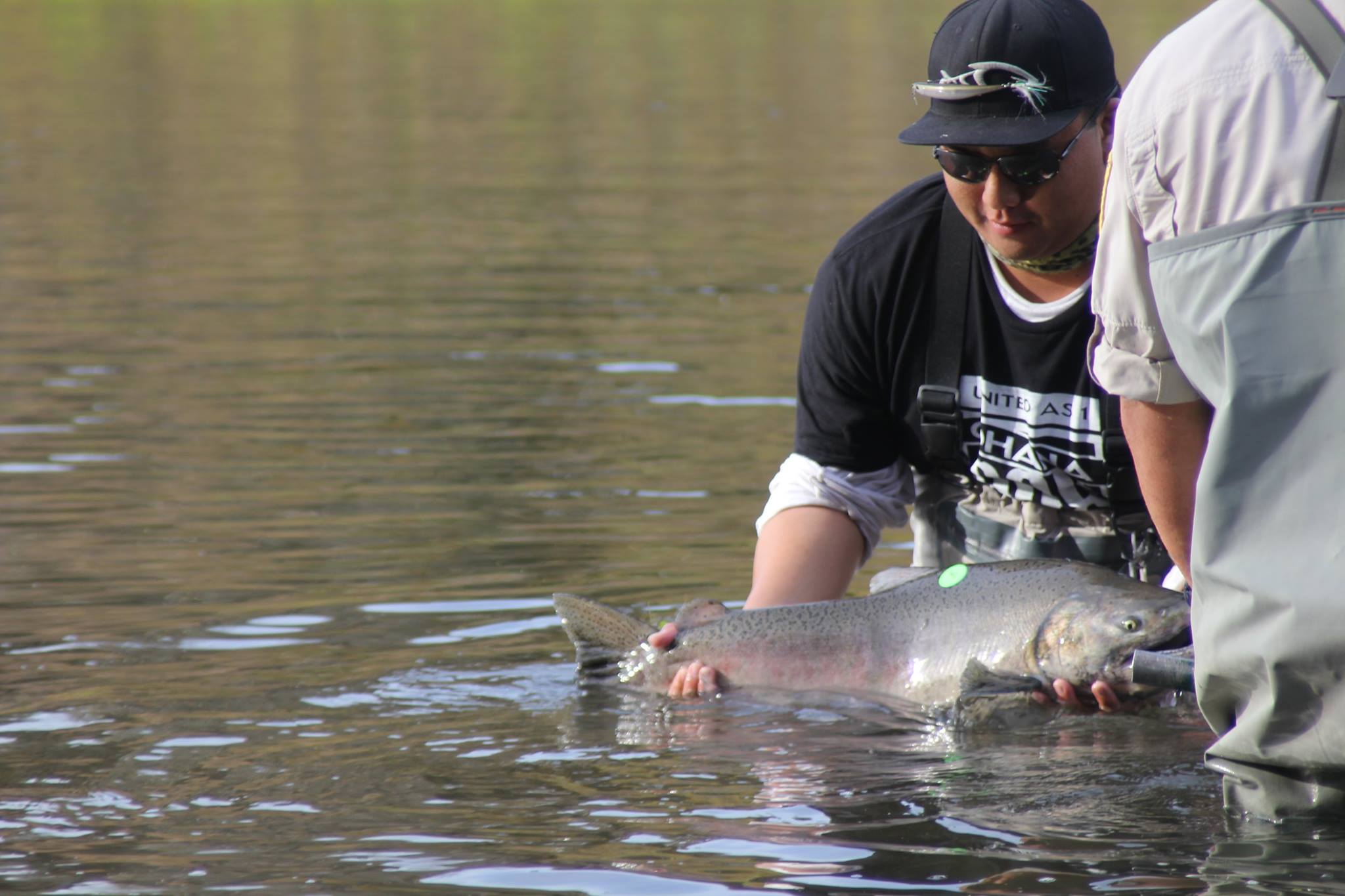A native Chinook salmon from California’s Central Valley.
Conservation of freshwater biodiversity faces major challenges. The fragmented nature of freshwater habitats often results in species populations being highly vulnerable to extirpation. Moreover, areas managed for resource conservation typically reflect jurisdictional or landscape boundaries that have little meaning for aquatic species.
Now, a team of scientists including TU’s Kurt Fesenmyer has developed a new planning tool “to identify an efficient network of priority conservation watersheds for California’s fishes, frogs, salamanders, snakes and turtles.” The planning tool identifies watersheds where current management emphasizes protection of biodiversity, then incorporates a network of additional watersheds without such conservation mandates but with high biodiversity values.
Fesenmyer is the GIS and Conservation Planning Director with Trout Unlimited’s Science Team in Boise, Idaho. He is a co-author of a recent report published in the journal Freshwater Science that describes the new planning tool and offers “a guide to a comprehensive approach to freshwater conservation” of biodiversity in California.
This new analysis reviews and synthesizes a wide range of datasets and studies on current efforts to conserve biodiversity in California, including a 2016 assessment of priority areas for conserving California’s freshwater fishes that found little overlap with existing protected areas (Grantham et al. 2016), indicating that improved management of both private and public lands is needed to conserve native fish species in the Golden State.
The California WaterBlog recently posted an overview of this analysis, and you can read the abstract or full report here.

This report is the product of a multi-year partnership which included conservation groups (TU and The Nature Conservancy), research universities (the University of California at Davis, Merced and Berkeley), resource agencies (the California Department of Fish and Wildlife and the U.S. Forest Service), and others. This partnership evolved out of a shared interest in reducing the gap in knowledge regarding California’s remarkable freshwater biodiversity and where in the state that biodiversity is found.
California has the greatest biodiversity of any state and more species of salmon and trout than any state other than Alaska. Many of California’s distinct runs or populations of salmon and steelhead have been in prolonged decline and are at risk of extirpation. TU is working across the state with multiple partners in both the public and private sectors to restore vital habitats, reconnect stream reaches, and improve streamflows in an effort to reverse this trend.
According to Fesenmyer, two key findings of the report have important implications for TU’s work and fisheries management.
One is that hotspots of freshwater biodiversity in California largely overlap with those places that are special to anglers and the state’s salmon and trout, such as the North Coast, the greater Sacramento and San Joaquin River watersheds, Eagle Lake, and the Klamath Basin, meaning the work TU is doing in these areas benefits not only salmonids, but also a broader suite of unique biodiversity.
The second is that public lands, both those managed to preserve biodiversity such as wilderness areas and national parks, and those managed for multiple use, are very important to California’s freshwater biodiversity.
Thus, efforts such as those driven by Trout Unlimited to make working lands more functional for aquatic species—like restoring wetlands used for agriculture in the Central Valley or Upper Klamath Basin and on private timber lands along the North Coast—and to strengthen protections for key habitat areas on public lands are nicely aligned with the findings of this report and, Fesenmyer says, “will go a long way towards conserving California’s unique freshwater-dependent species.”
— Sam Davidson



